Plot Summary
Unexpected Encounter in Marrakech
In the vibrant market of Marrakech, CIA officer Steven Cooke stumbles upon a man thought lost since before 9/11. This chance encounter could be a major intelligence breakthrough, but Cooke's excitement is short-lived. As he attempts to gather evidence, he is ambushed and killed, leaving the CIA with no record of the meeting. This sets off a chain of events that highlight the perilous nature of intelligence work and the constant threat faced by operatives in the field.
White House Under Pressure
In Washington, President Jack Rutledge is besieged by a relentless wave of terrorist threats. Despite public reassurances, the reality is a nation on edge, with defenses stretched thin. Rutledge must confront the harsh truth that the war on terror is far from over, and the pressure mounts as he navigates the complexities of international terrorism and the demands of leadership during a crisis.
Terrorist Threats Unveiled
General Bart Waddell presents alarming intelligence about Mohammed bin Mohammed, al-Qaeda's master bombmaker, who has resurfaced in Somalia. The President and his advisors debate the best course of action, weighing the risks of capturing him alive against the potential for further attacks. The urgency of the situation is underscored by the possibility of a nuclear threat on U.S. soil, forcing difficult decisions in the face of overwhelming odds.
A Deadly Game of Cat and Mouse
Scot Harvath, a relentless counterterrorism operative, is tasked with capturing Sayed Jamal, a notorious bombmaker hiding in Canada. Despite diplomatic tensions, Harvath successfully apprehends Jamal, but the operation's secrecy is compromised. As Harvath navigates the complexities of international law and espionage, he uncovers a deeper conspiracy that threatens national security, highlighting the intricate web of deception and betrayal in the world of espionage.
The Troll's Devious Plan
In the Scottish Highlands, a mysterious figure known as the Troll orchestrates a complex scheme involving al-Qaeda operatives. With a network of contacts and a penchant for manipulation, the Troll plays both sides, selling information to the highest bidder. His ultimate goal remains shrouded in mystery, but his actions set off a chain of events with global repercussions, underscoring the power of knowledge and the dangers of unchecked ambition.
A City Under Siege
On the eve of Independence Day, New York City is rocked by a series of devastating terrorist attacks. Bridges and tunnels are destroyed, isolating Manhattan and causing mass chaos. As emergency services struggle to respond, it becomes clear that the attacks are part of a larger, more sinister plan. The city is on high alert, and the nation watches in horror as the situation unfolds, illustrating the vulnerabilities of national security.
Desperate Measures in Central Park
With limited resources and mounting pressure, Harvath and his team attempt to intercept the terrorists in Central Park. Despite their best efforts, the operation goes awry, and the terrorists remain at large. As Harvath grapples with the consequences of failure, he realizes that the stakes are higher than ever, and the clock is ticking on preventing further catastrophe, highlighting the high stakes of failure in counterterrorism operations.
Secrets Unravel in Washington
Lieutenant Colonel Sean Olson informs Gary Lawlor that the marines identified in New York are missing from records for eighteen months, suggesting they were taken off the books for a covert operation. Lawlor's investigation reveals these marines were highly skilled and possibly recruited for a secret mission. The trail leads to Captain Bill Forrester, who denies knowledge of any off-book operations, but Lawlor suspects a deeper conspiracy involving the marines and a hidden agenda.
A Deadly Confrontation Unfolds
Gary Lawlor confronts Joseph Stanton, a key figure in the NSA's covert operations, at a warehouse. Stanton, implicated in the deaths of marines and the leak of secret locations, refuses to cooperate. A shootout ensues, resulting in Stanton's death. Lawlor narrowly escapes, realizing the depth of the conspiracy and the potential involvement of high-level operatives in the attacks on New York, underscoring the dangers of unchecked ambition and betrayal.
The Troll's Sinister Game
The Troll, a shadowy figure manipulating global events, orchestrates the attacks on New York to cover his tracks. His network of operatives, including Abdul Ali, executes a plan to retrieve Mohammed bin Mohammed, a key al-Qaeda figure. The Troll's ultimate goal is to control valuable intelligence, using chaos as a smokescreen for his operations. His manipulations have far-reaching consequences, threatening national security and highlighting the power of knowledge.
A Race Against Time
Scot Harvath races to stop the terrorists from executing their final plan. With limited resources and time running out, he navigates the complexities of international espionage and betrayal. Harvath's mission is complicated by the Troll's interference and the revelation of a fifth target in New York. As he closes in on the terrorists, Harvath must confront his own limitations and the high stakes of failure, underscoring the relentless nature of counterterrorism efforts.
The Final Showdown
Harvath tracks Mohammed bin Mohammed to Gibraltar, where a final confrontation unfolds. The Troll's presence complicates the mission, as Harvath must navigate a web of deceit and danger. In a tense standoff, Harvath eliminates Abdul Ali and Mohammed, avenging the deaths of his comrades. The Troll escapes, leaving Harvath with unanswered questions and a renewed determination to bring him to justice, highlighting the ongoing battle against terrorism.
A New Beginning for Harvath
After the mission, Harvath is offered a new home at Bishop's Gate, a historic property overlooking the Potomac. As he settles into his new life, Harvath reflects on his journey and the sacrifices made along the way. The gift symbolizes a new chapter, offering peace and a sense of belonging. Harvath's resolve to protect his country remains unwavering, as he prepares for future challenges, underscoring the personal cost of a life dedicated to national security.
Characters
Steven Cooke
Steven Cooke is a dedicated CIA operative whose chance encounter in Marrakech leads to his untimely death. His discovery of a high-value target sets off a chain of events that highlight the dangers faced by intelligence officers in the field, underscoring the perilous nature of espionage work.
President Jack Rutledge
President Rutledge is a seasoned politician facing unprecedented threats to national security. His resolve is tested as he navigates the complexities of international terrorism and the pressures of leadership during a crisis, highlighting the challenges of maintaining national security in a volatile world.
Scot Harvath
Harvath is a skilled and resourceful agent tasked with high-stakes missions. His dedication to protecting his country is unwavering, even as he confronts personal and professional challenges, underscoring the relentless nature of counterterrorism efforts.
Mohammed bin Mohammed
Known as M&M, Mohammed is a key figure in al-Qaeda's operations. His expertise in weapons of mass destruction makes him a significant threat, and his capture becomes a top priority for U.S. intelligence, highlighting the challenges of international espionage.
The Troll
The Troll is a shadowy figure who thrives on chaos and deception. His ability to manipulate events from behind the scenes makes him a formidable adversary in the world of espionage, underscoring the power of knowledge and the dangers of unchecked ambition.
Sayed Jamal
Jamal is a former chemistry professor turned terrorist, whose expertise in explosives poses a significant threat. His capture by Harvath sets off a series of events that reveal deeper conspiracies, highlighting the intricate web of deception and betrayal in the world of espionage.
General Bart Waddell
As the director of the Defense Intelligence Agency, Waddell is responsible for assessing and responding to global threats. His insights into al-Qaeda's operations are crucial to the President's decision-making, highlighting the complexities of maintaining national security.
Abdul Ali
Ali is a key player in the terrorist attacks on New York City. His strategic mind and willingness to sacrifice for his cause make him a dangerous adversary, underscoring the complexities of international terrorism and the high stakes of failure.
Carolyn Leonard
Leonard is the head of the President's security detail, tasked with ensuring his safety during a national crisis. Her professionalism and loyalty are unwavering, even in the face of personal challenges, highlighting the personal cost of a life dedicated to national security.
Alan Driehaus
Driehaus is a staunch advocate for the rule of law, often clashing with colleagues over the ethics of counterterrorism operations. His resignation underscores the ideological divides within the government, highlighting the moral complexities of the war on terror.
Gary Lawlor
Gary Lawlor is a dedicated agent from the Department of Homeland Security, unraveling the conspiracy behind the attacks on New York. His investigation leads him to confront high-level operatives and uncover a web of deceit, highlighting his commitment to national security and the truth.
Plot Devices
Covert Operations and Intelligence Leaks
The narrative is driven by covert operations and the constant threat of intelligence leaks. The complexity of international espionage is highlighted as characters navigate a web of deception and betrayal, underscoring the perilous nature of intelligence work.
Terrorist Attacks and National Security
The coordinated attacks on New York City serve as a catalyst for the story, illustrating the vulnerabilities of national security. The urgency of the situation forces characters to make difficult decisions in the face of overwhelming odds, highlighting the high stakes of failure in counterterrorism operations.
The Troll's Manipulations
The Troll's role as an information broker adds a layer of intrigue to the narrative. His ability to manipulate events from afar underscores the power of knowledge and the dangers of unchecked ambition, highlighting the complexities of international espionage.
Moral and Ethical Dilemmas
Characters grapple with the ethical implications of their actions, highlighting the moral complexities of the war on terror. The tension between security and civil liberties is a recurring theme, challenging characters to weigh the consequences of their decisions, underscoring the personal cost of a life dedicated to national security.
Analysis
"Takedown" by Brad Thor is a thrilling exploration of the complexities of modern terrorism and the relentless nature of counterterrorism efforts. Through a gripping narrative filled with intrigue and suspense, the book delves into the moral and ethical dilemmas faced by those tasked with protecting national security. The story highlights the vulnerabilities of a nation under siege and the high stakes of failure in the war on terror. With a cast of compelling characters and a plot driven by covert operations and intelligence leaks, "Takedown" underscores the power of knowledge and the dangers of unchecked ambition. The book serves as a stark reminder of the personal cost of a life dedicated to national security and the ongoing battle against terrorism.
Last updated:
FAQ
Synopsis & Basic Details
What is Takedown about?
- Global Terrorist Retaliation: Takedown plunges into a coordinated terrorist attack on New York City, orchestrated by al-Qaeda in retaliation for the covert capture of their master bombmaker, Mohammed bin Mohammed. The attacks, which destroy all bridges and tunnels into Manhattan, serve as a diversion for a deeper mission: to retrieve their high-value operative.
- Covert Intelligence War: The story follows Scot Harvath, a counterterrorism operative, as he navigates the chaos of the attacks and uncovers a complex web of inter-agency secrets, betrayals, and a shadowy information broker known as "the Troll". Harvath must assemble an unofficial team to track down the terrorists and prevent further catastrophe, all while battling bureaucratic infighting.
- Personal Stakes and Sacrifice: Beyond the geopolitical thriller, the narrative explores the personal toll of the war on terror, as Harvath and his team, composed of medically discharged Special Operations veterans, confront their own demons and make profound sacrifices. The mission becomes deeply personal for Harvath, culminating in a deadly confrontation and a quest for justice.
Why should I read Takedown?
- High-Octane, Relentless Pacing: Takedown offers an unyielding, action-packed narrative that throws readers directly into the heart of a major terrorist attack, maintaining a relentless pace from start to finish. Brad Thor's writing ensures constant tension and high stakes, making it a gripping read for fans of military thrillers and counterterrorism fiction.
- Intriguing Espionage & Betrayal: The novel delves deep into the murky world of intelligence, showcasing complex covert operations, inter-agency rivalries, and shocking betrayals that keep readers guessing about who can truly be trusted. The layers of deception, particularly involving "the Troll" and the NSA's Athena Program, provide a rich, thought-provoking subplot.
- Exploration of Moral Dilemmas: Beyond the explosions and firefights, Takedown thoughtfully examines the ethical compromises and psychological burdens faced by those on the front lines of national security. It forces readers to consider the "cost of success" in the war on terror, as characters grapple with extraordinary rendition, torture, and the blurred lines between justice and vengeance.
What is the background of Takedown?
- Post-9/11 Geopolitical Landscape: The novel is set in a world deeply scarred by the September 11th attacks, with the "war on terror" as its central backdrop, influencing political decisions, intelligence operations, and public sentiment. President Rutledge's internal struggles reflect the real-world pressures faced by leaders in a volatile global environment, constantly battling new threats.
- Technological Espionage & Data Mining: A significant plot element revolves around the NSA's "Athena Program," a deep-black data-mining operation utilizing advanced surveillance technologies like Echelon and Carnivore. This highlights contemporary concerns about government overreach, privacy, and the weaponization of information, reflecting real-world debates about intelligence gathering.
- Canadian Asylum Policy Controversy: The story touches upon the contentious issue of Canada's liberal asylum policies being exploited by terrorists, a topic that has been a point of friction between the U.S. and Canada in real-world counterterrorism efforts. This detail grounds the fictional plot in plausible, if sensitive, geopolitical realities.
What are the most memorable quotes in Takedown?
- "If a nation refuses to bend, then that nation is almost certainly doomed to break. In this case we have to suspend the rule of law in part, in order to save it.": President Rutledge's stark declaration (Chapter 2) encapsulates the administration's controversial "success at any cost" philosophy in the war on terror, highlighting the central moral dilemma of sacrificing principles for perceived security. This quote defines the ideological clash within the government, particularly with Secretary Driehaus.
- "The sword is the midwife of civilization and everything that has happened since civilization's birth has happened at the tip of that sword.": Gary Lawlor's blunt assertion (Chapter 28) to Alan Driehaus reveals a cynical, pragmatic view of power and survival, arguing that brute force, not Western ideals, is the ultimate arbiter in global conflicts. This powerful statement underscores the novel's theme of a brutal, uncompromising reality in the fight against radical extremism.
- "You never buried anyone unless you were absolutely certain they were dead.": The chilling final line of the book (Chapter 106) serves as a potent piece of foreshadowing and a thematic statement on the enduring nature of threats and the personal cost of Harvath's profession. It implies that even after apparent victories, enemies and their schemes can resurface, ensuring the cycle of conflict continues.
What writing style, narrative choices, and literary techniques does Brad Thor use?
- Propulsive, Lean Prose: Brad Thor employs a direct, unadorned writing style characterized by short sentences and paragraphs, creating a sense of urgency and rapid progression. This lean prose mirrors the fast-paced, high-stakes nature of the plot, keeping the reader constantly engaged without unnecessary exposition.
- Alternating Perspectives & Structural Pacing: The narrative frequently shifts between multiple viewpoints and locations—from the White House Situation Room to covert operations in Marrakech, Somalia, and New York—often in short, impactful chapters. This technique builds suspense by showing different facets of the unfolding crisis and the disparate efforts to combat it, creating a mosaic of global conflict.
- Foreshadowing and Thematic Echoes: Thor subtly weaves in foreshadowing, such as Steven Cooke's initial discovery leading to his death, or the recurring motif of "not knowing until it's too late." He also uses thematic echoes, like the repeated references to 9/11, to underscore the gravity of the new attacks and the enduring trauma of past events, deepening the emotional resonance for the reader.
Hidden Details & Subtle Connections
What are some minor details that add significant meaning?
- Steven Cooke's Caftan Quest: The seemingly mundane detail of Steven Cooke being in the Marrakech alley to buy a caftan for his sister (Chapter 1) highlights the human element and personal sacrifice behind intelligence work. It underscores that even highly trained operatives have ordinary lives and loved ones, making his sudden, brutal death more poignant and emphasizing the random, tragic nature of their profession.
- The Troll's Physical Stature and Dogs: The description of "the Troll" as a man under three feet tall, yet commanding enormous Caucasian Ovcharkas (Argus and Drako) (Chapter 5), subtly symbolizes his character. His physical smallness contrasts with his immense power and influence as an information broker, while the loyal, vicious dogs represent his need for protection and his ability to control formidable forces, reflecting his manipulative nature.
- Sayed Jamal's Fire Extinguisher: Harvath's clever deduction that Jamal, as a meticulous bombmaker, would have a CO2 fire extinguisher (Chapter 7) is a small but crucial detail. It showcases Harvath's sharp observational skills and ability to think like his enemy, turning a seemingly innocuous household item into a tool for disarming a booby-trapped laptop, highlighting the ingenuity required in counterterrorism.
What are some subtle foreshadowing and callbacks?
- "The problem with being in the wrong place at the wrong time is that you never know it until it's too late.": This opening line (Chapter 1) immediately sets a tone of impending doom and unpredictability, foreshadowing not only Steven Cooke's fate but also the broader chaos and unexpected turns of the New York attacks. It's a callback to the inherent dangers of intelligence work and the constant threat of unforeseen consequences.
- Harvath's "Bullet Wrapped in Red Tape": Harvath's symbolic gift to his boss, Gary Lawlor—a .50-caliber bullet wrapped in red tape (Chapter 7)—foreshadows his growing frustration with government bureaucracy and his eventual consideration of leaving service. It's a subtle commentary on the systemic obstacles that hinder effective counterterrorism, a theme that becomes more pronounced as the mission unfolds.
- The "Tenth Time" for Soldiers in Combat: Dr. Hardy's discussion about the "tenth time" a soldier might freeze up under combat stress (Chapter 27) subtly foreshadows the psychological challenges faced by Harvath's team. While most veterans thrive in battle, the possibility of one succumbing to their demons adds a layer of tension and vulnerability to the otherwise hardened operatives, hinting at the personal battles beneath the surface.
Who are the most significant supporting characters?
- Dr. Samuel Hardy, PhD: More than just a VA psychologist, Dr. Hardy is a former Green Beret (Chapter 27) who specializes in Special Operations personnel. His unique background allows him to understand the "warrior ethic" and the psychological complexities of Harvath's team, providing crucial insight into their motivations and potential vulnerabilities. He acts as a moral compass and a source of understanding for these elite but damaged individuals.
- Kevin McCauliff (NGA Analyst): Harvath's friend and National Geospatial-Intelligence Agency analyst (Chapter 24) is a vital, albeit reluctant, asset. His ability to hack into secure systems and track cell phone data provides the critical intelligence needed to locate the terrorists, demonstrating the indispensable role of technical expertise in modern espionage. His fear of "Big Brother" watching his communications also subtly highlights the pervasive surveillance themes in the book.
- Captain Bill Forrester (USMC): The Marine Security Battalion officer (Chapter 51) who recruited the "off-book" marines for the NSA's Athena Program is a tragic figure. His loyalty to his men and his eventual murder by Joseph Stanton underscore the dangerous ethical compromises made in deep-cover operations. Forrester's character reveals the human cost when intelligence agencies operate outside conventional oversight, making him a pivotal, if short-lived, character.
Psychological, Emotional, & Relational Analysis
What are some unspoken motivations of the characters?
- President Rutledge's Paternal Guilt: Beyond national security, President Rutledge's fierce determination to respond to the New York attacks is deeply intertwined with his daughter, Amanda, being a victim (Chapter 29). His unspoken motivation is a father's rage and a desperate need to protect his child, which fuels his aggressive rhetoric and decision-making, making the crisis intensely personal for him.
- The Troll's Vengeance: While presented as a cold, calculating information broker, "the Troll"'s ultimate motivation for targeting Mohammed bin Mohammed is deeply personal and rooted in a past sexual assault he suffered as a child (Chapter 100). This hidden trauma transforms his actions from mere profit-seeking to a long-simmering quest for brutal, personal retribution, adding a dark, psychological layer to his character.
- Tracy Hastings's Redemption: Tracy's unwavering commitment to defusing the bomb, despite her past trauma (Chapter 69), is driven by an unspoken need for redemption and to overcome her personal demons. Her willingness to face a device "almost identical to the last bomb I handled" reveals a profound psychological battle to reclaim her identity and competence after a life-altering injury.
What psychological complexities do the characters exhibit?
- Harvath's Patriotism vs. Disillusionment: Scot Harvath grapples with the psychological toll of his work, oscillating between deep patriotism and profound disillusionment with government bureaucracy and partisan politics (Chapter 7). This internal conflict, symbolized by his consideration of leaving government service, highlights the mental strain of operating in a morally ambiguous world where "true patriots" are often exploited or undermined.
- Herrington's Survivor's Guilt and Leadership Burden: Bob Herrington carries immense survivor's guilt from his last mission in Afghanistan, where his team was maimed under his command (Chapter 9). His insistence on taking point and his struggle to accept his medical retirement reveal a deep psychological need to prove his worth and atone for perceived failures, showcasing the heavy burden of leadership and responsibility.
- Mohammed bin Mohammed's Contempt and Resilience: Despite being a master bombmaker, Mohammed bin Mohammed exhibits a complex mix of contempt for his captors and an almost fanatical resilience under torture (Chapter 88). His ability to withstand extreme pain, fueled by religious conviction and a deep-seated disdain for Western values, highlights the psychological fortitude of radicalized individuals, making him a formidable and disturbing antagonist.
What are the major emotional turning points?
- Steven Cooke's Death: The brutal, unexpected death of Steven Cooke in Marrakech (Chapter 1) is the initial emotional shockwave, immediately establishing the high stakes and personal cost of the intelligence world. It serves as a stark reminder of vulnerability and sets the tone for the subsequent acts of violence and retaliation.
- The New York City Attacks: The coordinated destruction of New York's bridges and tunnels (Chapter 12) is a massive emotional turning point, plunging the city and the nation into chaos and fear. This event triggers widespread panic, grief, and a collective sense of vulnerability, echoing the trauma of 9/11 and galvanizing the characters into desperate action.
- Bob Herrington's Sacrifice: Bob Herrington's death while protecting Harvath and the team (Chapter 95) is the most profound emotional turning point for Harvath. It transforms the mission from a professional duty into a deeply personal quest for vengeance, solidifying Harvath's resolve and pushing him to extreme measures to honor his friend's memory.
How do relationship dynamics evolve?
- Harvath and Herrington: Brotherhood Forged in Fire: The relationship between Scot Harvath and "Bullet Bob" Herrington evolves from a deep professional respect to an unbreakable brotherhood, akin to family (Chapter 9). Their shared history in Special Operations and mutual understanding of the sacrifices involved create an unspoken bond, making Bob's death a devastating personal loss for Harvath and a catalyst for his vengeful actions.
- Harvath and Tracy Hastings: From Skepticism to Trust and Affection: Initially, Harvath is skeptical of Tracy Hastings, particularly due to her past trauma and gender in a male-dominated field (Chapter 43). However, her courage, expertise, and willingness to face her fears in defusing the bomb forge a deep trust and mutual respect, culminating in a burgeoning romantic relationship (Chapter 99), demonstrating the power of shared adversity.
- President Rutledge and Alan Driehaus: Ideological Clash and Political Fallout: The dynamic between President Rutledge and DHS Secretary Alan Driehaus is one of constant ideological friction, evolving from professional disagreement to an irreconcilable clash over the "rule of law" versus "success at any cost" (Chapter 2). Driehaus's principled resignation (Chapter 42) highlights the deep moral divides within the government and the personal cost of adhering to one's convictions.
Interpretation & Debate
Which parts of the story remain ambiguous or open-ended?
- The Troll's Ultimate Fate: While Harvath kills Abdul Ali and Mohammed bin Mohammed, "the Troll" escapes on his dog (Chapter 103), leaving his ultimate fate ambiguous. The final line, "You never buried anyone unless you were absolutely certain they were dead," directly applies to him, suggesting he remains a lurking threat and a potential antagonist for future stories, leaving readers to wonder about his next move.
- The Full Extent of Government Complicity: The novel hints at deep-seated corruption and inter-agency manipulation, particularly with the DIA's "off-book" operations and the NSA's Athena Program. While Joseph Stanton is killed, the full scope of who knew what, and how high up the chain of command the complicity went, remains somewhat ambiguous, leaving readers to question the true integrity of the intelligence community.
- The Long-Term Impact of Rutledge's Rhetoric: President Rutledge's unscripted, aggressive speech declaring war on "radical Islamic fanaticism" (Chapter 29) is a major turning point. The immediate political fallout is shown, but the long-term global implications—how it might further inflame tensions or unite adversaries—are left open-ended, inviting debate on the consequences of such powerful, polarizing statements.
What are some debatable, controversial scenes or moments in Takedown?
- The Torture of Mohammed bin Mohammed: The graphic depiction of Mohammed bin Mohammed's torture, including the use of pepper spray in his urethra (Chapter 88), is highly controversial. It forces readers to confront the ethical boundaries of interrogation, questioning whether such extreme measures are ever justified, even against a heinous terrorist, and whether they compromise the moral standing of those who employ them.
- The Faked Torture of Sayed Jamal's Family: The scene where Mike Jaffe fakes the torture and murder of Sayed Jamal's family (Chapter 30) is morally ambiguous. While it's revealed to be a deception, the willingness of U.S. operatives to simulate such atrocities, and Brad Harper's internal conflict over it, raises questions about the psychological impact of "black ops" and the fine line between necessary deception and moral corruption.
- Harvath's Personal Vengeance: Harvath's decision to personally execute Mohammed bin Mohammed, not just kill him, but inflict a slow, agonizing death using Dermestes maculatus beetles (Chapter 104), is a highly debatable moment. It blurs the line between justice and personal vengeance, challenging the reader to consider whether Harvath, in his grief and rage, descends to the level of the terrorists he fights.
Takedown Ending Explained: How It Ends & What It Means
- Harvath's Personal Retribution and Unfinished Business: The ending sees Scot Harvath successfully track down and brutally kill both Abdul Ali and Mohammed bin Mohammed in Gibraltar, fulfilling his promise of vengeance for Bob Herrington's death. However, "the Troll", the mastermind behind the intelligence leaks and the New York attacks, escapes. This signifies that while Harvath achieves personal justice, the larger, systemic threats and the shadowy figures who manipulate global events remain at large, setting up future conflicts.
- The Gift of Bishop's Gate and a New Beginning: President Rutledge offers Harvath a ninety-nine-year lease on Bishop's Gate, a historic property, as a reward for his service (Chapter 105). This gift symbolizes a potential new beginning for Harvath, a chance for a semblance of a normal life and a deeper relationship with Tracy Hastings. It represents the government's attempt to acknowledge and compensate for the immense personal sacrifices made by operatives like Harvath, offering a rare moment of peace amidst the chaos.
- The Lingering Threat and the Cycle of Violence: The final moments of the book, with Tracy Hastings being shot by an unseen assassin from Harvath's past (Chapter 106), deliver a shocking twist. This ending shatters any illusion of a peaceful resolution, reinforcing the novel's core theme that the war on terror is an endless cycle. It means that even when specific enemies are "taken down," new threats emerge, and the personal cost for those who fight remains constant, ensuring that Harvath's fight is far from over.
Review Summary
Takedown receives mixed reviews, with an average rating of 4.29/5. Many praise its thrilling action and fast-paced plot, appreciating Thor's research and suspenseful writing. Critics note heavy-handed political themes and simplistic character development. Some find the portrayal of terrorism and interrogation techniques disturbing. Readers enjoy Scot Harvath's character development and the introduction of new elements like "The Troll." The book's ending is described as a cliffhanger, leaving readers eager for the next installment.
Scot Harvath Series
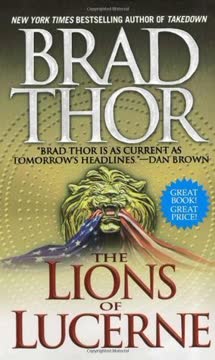
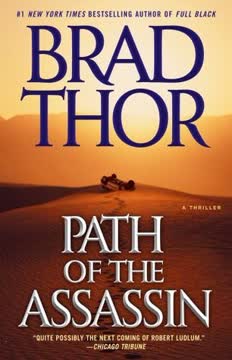
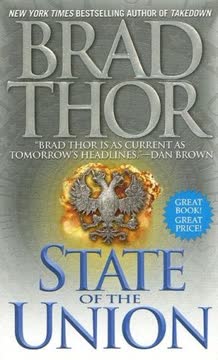

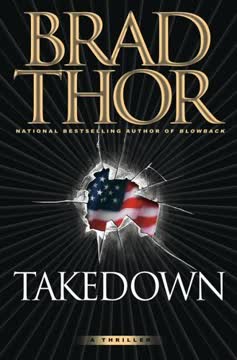
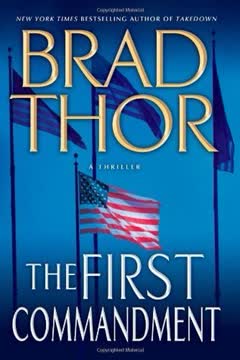
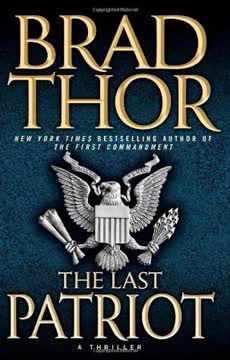
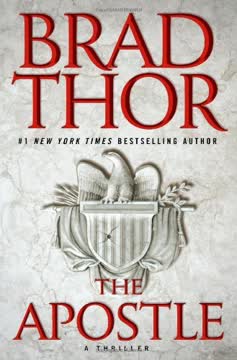
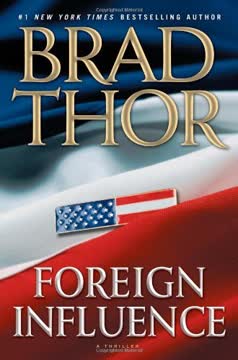
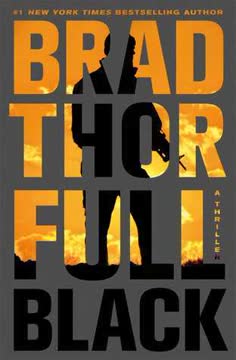
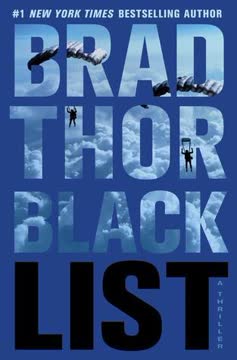
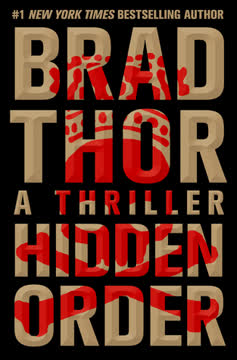
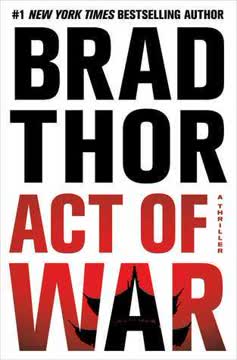
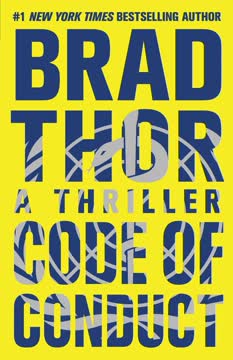
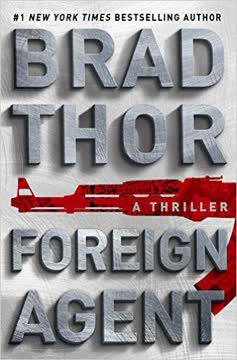
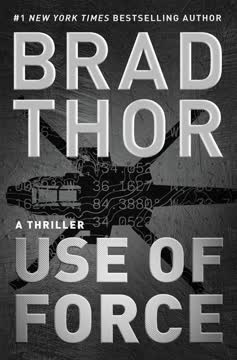
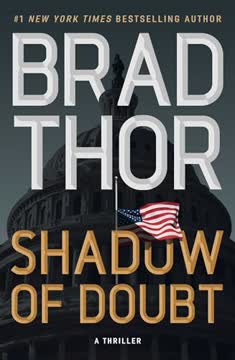
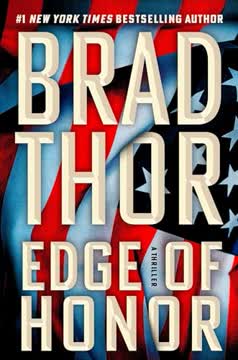
Download PDF
Download EPUB
.epub digital book format is ideal for reading ebooks on phones, tablets, and e-readers.




